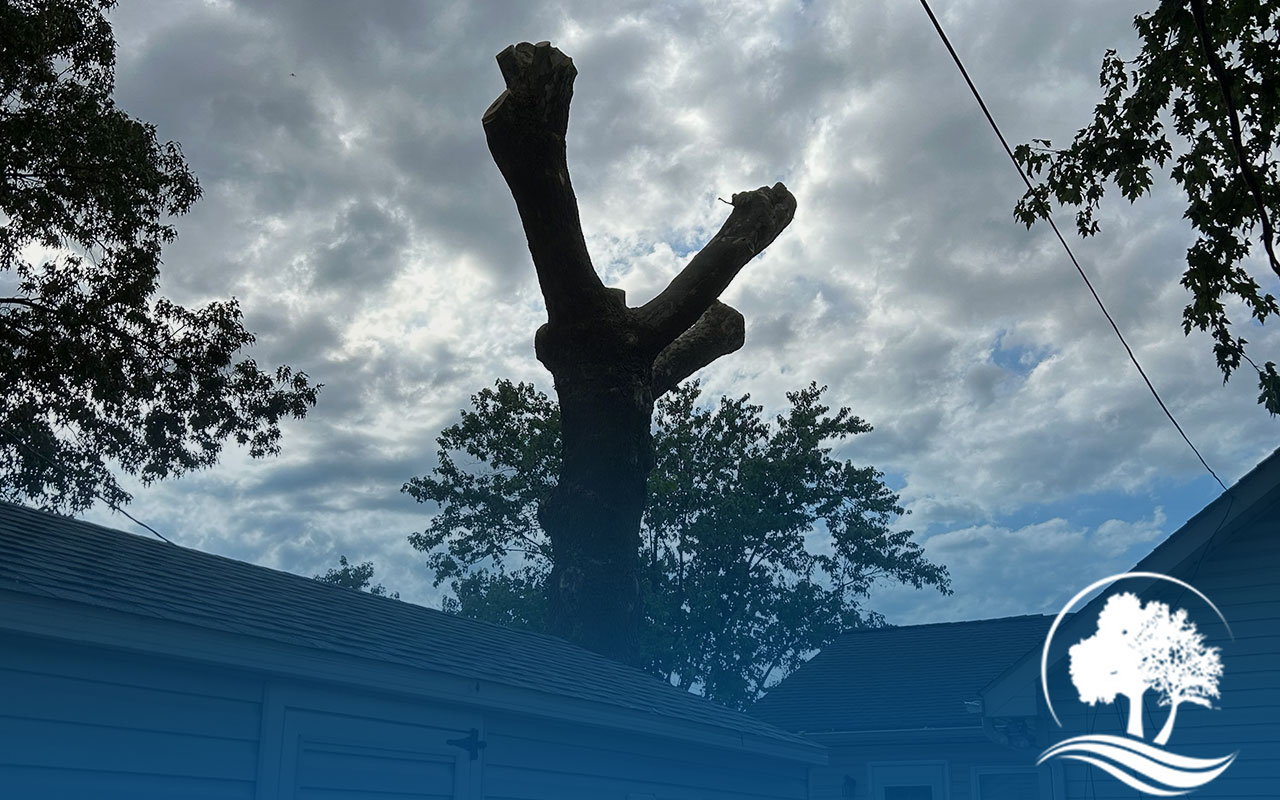
Pruning is essential for keeping trees strong, healthy, and safe. However, when done incorrectly, it can weaken trees, leave them vulnerable to disease, and even shorten their lifespan. Many homeowners and business owners in Baltimore unknowingly make common pruning mistakes that can cause long-term damage. Understanding what not to do is just as important as knowing the right techniques. Let’s explore some of the most common pruning mistakes and how to avoid them to keep your trees thriving.
Common Pruning Mistakes That Can Damage Trees
1. Topping the Tree
Topping, also known as hat-racking or pollarding, is when the upper branches are cut back drastically, leaving only stubs. Many people think this will control the tree’s size, but it actually weakens the structure and leads to:
- Rapid, weak growth that breaks easily
- Increased vulnerability to pests and diseases
- A stressed tree that may not recover
Proper pruning should involve selective thinning to maintain the tree’s natural shape without causing harm.
2. Cutting Too Close to the Trunk
Removing branches too close to the trunk, known as a flush cut, damages the tree’s natural ability to heal. The branch collar (the swollen area where the branch meets the trunk) contains healing properties. Removing it exposes the tree to decay and infection. Instead, always cut just outside the branch collar to allow proper healing.
3. Over-Pruning in One Session
Trees need a certain amount of foliage to produce energy. Removing too many branches at once can:
- Reduce the tree’s ability to absorb nutrients
- Lead to excessive stress and weakened growth
- Increase the risk of sunscald (damage from too much sunlight on exposed bark)
A good rule of thumb is to never remove more than 25% of a tree’s canopy in a single pruning session.
4. Using Dull or Dirty Tools
Pruning tools should always be sharp and sanitized. Dull blades create rough cuts, making it harder for trees to heal. Dirty tools can spread diseases from one tree to another. To prevent this:
- Sharpen tools regularly for clean cuts
- Disinfect blades with rubbing alcohol or a bleach solution after each use
- Use the right tool for the job—hand pruners for small branches, loppers for thicker branches, and saws for larger limbs
5. Pruning at the Wrong Time of Year
Tree species have specific pruning seasons. Some trees should be pruned in winter when they are dormant, while others respond better to pruning in late spring or summer. Common mistakes include:
- Pruning spring-flowering trees in winter, which removes flower buds
- Cutting trees in late summer or fall, making them vulnerable to winter damage
- Pruning right before extreme weather, which can cause additional stress
If unsure, consult a professional arborist to determine the best pruning time for your specific tree type.

Protect Your Trees with Professional Pruning Services
Avoiding these common pruning mistakes can make a huge difference in the health and longevity of your trees. However, proper tree care requires knowledge and precision. Our certified ISA Arborist team offers residential and commercial tree pruning services in Baltimore to keep your trees strong and beautiful. We are licensed, insured, and BBB-accredited, ensuring expert care for your property. Contact us today for professional tree pruning services!
